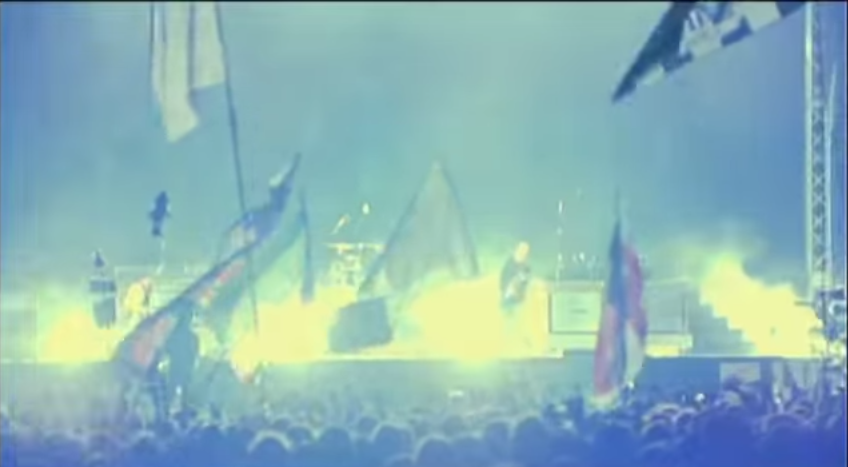The 180 degree rule exists to avoid distracting viewers from what is happening in a film by confusing them about where it is happening. For example, if you were to film an army attacking another army it would be confusing if you were to cut between two shots taken from different sides of the army, as it may look as if they have suddenly changed the direction they are attacking from.
This rule is not just helpful in scenes featuring armies, but in pretty much any scene. When capturing something on camera this rule is often obeyed religiously, but there are notable examples of types of footage in which is is never used. For example, when filming bands performing live on stage at music events the camera operators and editors do not seem to acknowledge the existence of the 180 degree rule at all. Perhaps this is because it is assumed that the viewer has a clear idea in their head of where the stage is in relation to the audience and will therefore not get confused when watching a performance from many different angles.
In these 3 shots, taken from live footage of Muse at Glastonbury in 2004, you can see that the editor cuts strait from an angle with the camera at the front right side of the stage, to an angle from the back left side of the stage, before immediately cutting to a wide angle of the stage from a distance. Is there a 180 degree rule present here? It doesn't appear so.
In film however, this kind of disregard for traditional continuity editing is more rare. There are however, some notable examples of times when filmmakers have broken this rule. A good example of someone who was famous for showing complete disregard for the 180 degree rule is a filmmaker I am very fond of, and have mentioned in my blog before, Yasujiro Ozu.
Diagram of scene and angles
The shots pictured above are from a dialogue scene in the Ozu film Tokyo Story. They show no regard for the 180 degree rule (This is most likely deliberate as some of Ozu's early work uses the 180 degree rule). This kind of 360 degree editing is common in Ozu's films, but despite this the editing in Ozu's films does not draw attention to itself. In fact, even when you are trying to pay attention to Ozu's editing style, it is often very difficult to concentrate on where the cuts are and which angles are being used. This proves that, in some instances, the 180 degree rule may not be as necessary as some would have you believe.










No comments:
Post a Comment